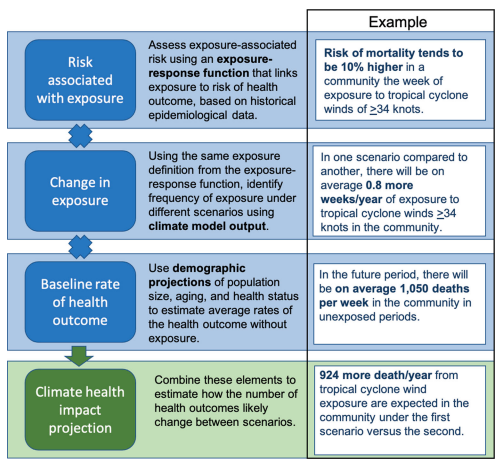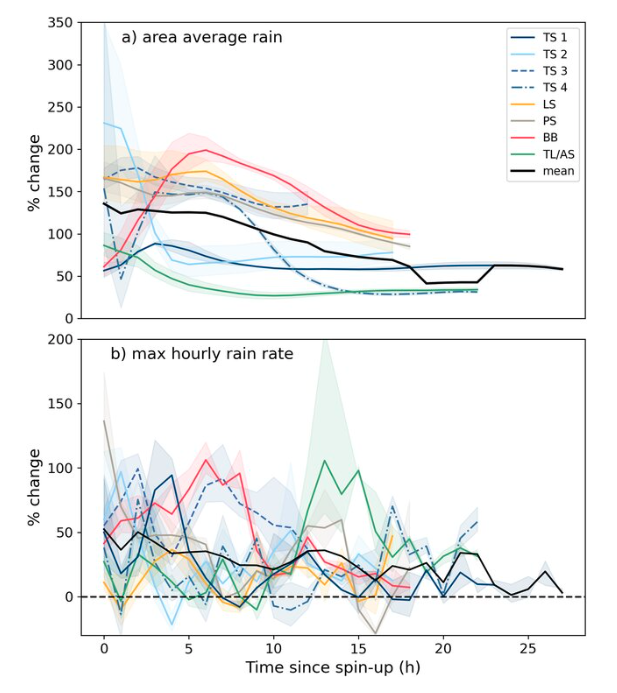
Center for Climate & Weather Extremes
@c3we_ncar
C3WE is a research group at @NCAR_Science dedicated to understanding weather & climate extremes and enhancing societal resilience.
ID: 3121532514
http://www.c3we.ucar.edu 31-03-2015 20:31:43
1,1K Tweet
1,1K Followers
291 Following

Review article led by Brooke Anderson & co-authors Andrea Schumacher, Center for Climate & Weather Extremes's @Climate_Done,& Jim Hurrell on how developments in climate epidemiology & science pose new opportunities to project health impacts of floods & tropical cyclones in changing climate. link.springer.com/article/10.100…


New insights into the sub-seasonal predictability of North American Monsoon precipitation via research led by Center for Climate & Weather Extremes scientist Andy Prein and featuring C3WE co-authors Erin Towler and Ming Ge (just published by AGU (American Geophysical Union)). agupubs.onlinelibrary.wiley.com/doi/full/10.10…


New work led by Center for Climate & Weather Extremes's @Climate_Done, along with Gary Lackmann and Andy Prein, finds that hurricane-strength tropical cyclones have strengthened at twice the rate of weaker storms (per unit surface) in a warming climate over the past ~40 years. wcd.copernicus.org/articles/3/693…


New work on tropical cyclone projections for the east coast of Australia using CESM (both decadal and traditional large ensembles) led by Center for Climate & Weather Extremes scientist Cindy Bruyere and including @Climate_Done, @AbbyJaye, & Erin Towler. (1/3) sciencedirect.com/science/articl…


New book co-edited by Jennifer Collins and Center for Climate & Weather Extremes scientist @Climate_Done: Hurricane Risk in a Changing Climate (with foreword by Prof Michael E. Mann)! (1/2) link.springer.com/book/10.1007/9…


New work led by @edougherty_ and featuring Center for Climate & Weather Extremes scientist Andy Prein explores the (substantial) intensification of heavy rainfall from mesoscale convective systems in a warming climate using ensembles of high resolution simulations. agupubs.onlinelibrary.wiley.com/doi/10.1029/20…


How should climate modeling and catastrophe modeling be combined to understand evolving risk? If you know (part of) the answer, check out the session convened by @Climate_Done, @scottstgeorge and suz tolwinski-ward at #AGU23. Abstract submissions: agu.confex.com/agu/fm23/preli…






![Dr. Daniel Swain (@weather_west) on Twitter photo For folks asking how this compares to our hypothetical "ARkStorm 2.0" scenarios published, a very approximate estimate: we've so far experienced about 1/3 to 1/2 the precipitation we'd expect from such a scenario on a statewide basis. #CAwx #CAwater [1/2]
science.org/doi/10.1126/sc… For folks asking how this compares to our hypothetical "ARkStorm 2.0" scenarios published, a very approximate estimate: we've so far experienced about 1/3 to 1/2 the precipitation we'd expect from such a scenario on a statewide basis. #CAwx #CAwater [1/2]
science.org/doi/10.1126/sc…](https://pbs.twimg.com/media/FmPCKGmacAIgtaz.jpg)